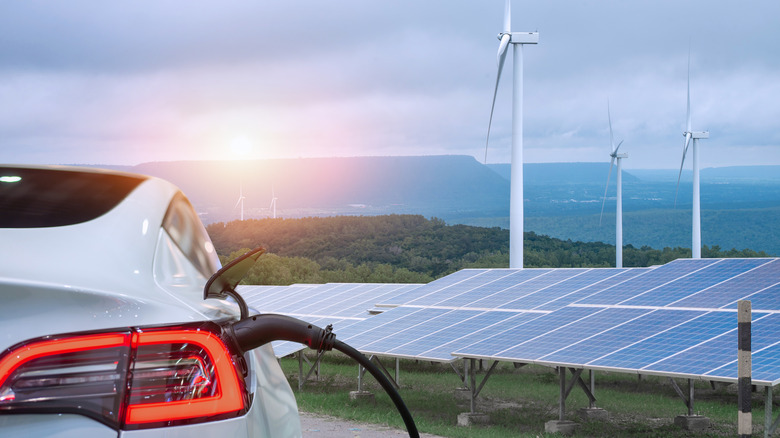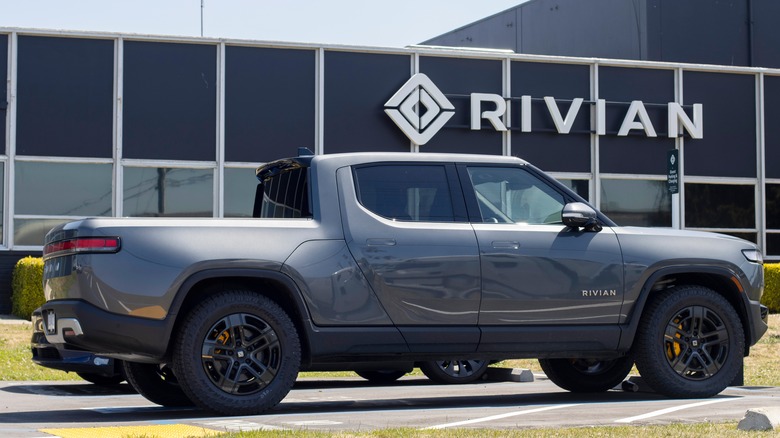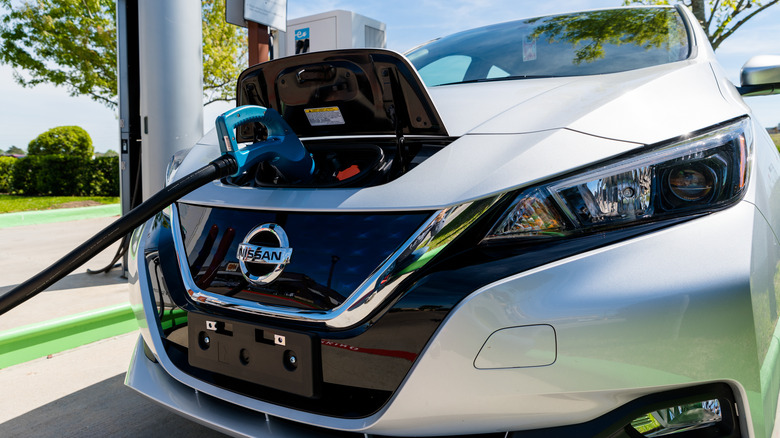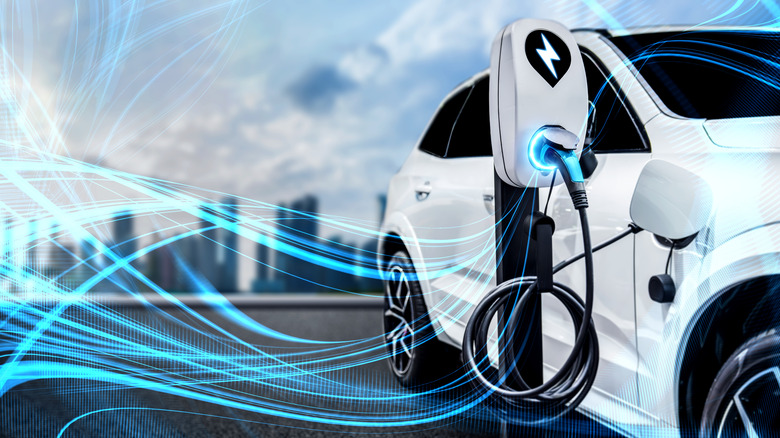Every 2023 Car That Qualifies For The US EV Tax Incentive
EVs are growing in popularity across the United States and the global marketplace. Recurrent Auto reports that by 2035, only about 10% of new light vehicles sold are projected to be gasoline operated (and virtually none will run on diesel fuel). In the United States, Recurrent Auto projects that 68% of new cars sold will be fully hybrid by 2035, with a 93% market share in the European Union at the same time.
Adoption rates are picking up across the globe, and for good reason. EVs are cheaper to maintain and drive on a regular basis as compared to vehicles relying on traditional, internal combustion engines (ICE). They produce zero tailpipe emissions, and they often maintain better overall durability because their internal workings include fewer moving parts. The switch, for some, is an incredibly simple choice.
Still, the up-front cost may be a reason to wait. The federal government has offered tax incentives in the past for new buyers of electric vehicles, and in 2023, there is another round of tax breaks for those in the market for a new car and choose an EV. As well, the IRS has provided a list of all the cars that qualify for this federal tax incentive and an explainer on how to qualify for the tax break and the process for securing it.
Vans, sport utility vehicles (SUVs), and pickup trucks
Vehicles in the first grouping noted by the IRS have a maximum MSRP value of $80,000, regardless of the purchase price you agree to pay for the vehicle. The IRS discerns larger vehicles from smaller, sedan-type EVs. Separated further, there are designations for SUVs, vans, and trucks for a clearer picture of the rules governing the use of this tax credit for consumers.
The larger vehicles listed are:
- Audi Q5 TFSI e Quattro – PHEV (2023)
- BMW X5 xDrive45e (2021, 2022,2023)
- Chrysler Pacifica PHEV (2022, 2023)
- Ford E-Transit (2022, 2023)
- Ford F-150 Lightning (2022, 2023)
- Jeep Grand Cherokee 4xe (2022, 2023)
- Jeep Wrangler 4xe (2022, 2023)
- Lincoln Aviator Grand Touring (2022, 2023)
- Rivian R1S (2022, 2023)
- Rivian R1T (2022, 2023)
- Tesla Model Y All-Wheel Drive – 3 row, 7 seat variant (2022, 2023)
- Tesla Model Y Long Range – 3 row, 7 seat variant (2022, 2023)
- Tesla Model Y Performance – 3 row, 7 seat variant (2022, 2023)
- Volkswagen ID.4 AWD Pro (2023)
- Volkswagen ID.4 AWD Pro S (2023)
All other vehicles
Vehicles not listed as falling within one of the above three categories are classified under a single grouping. The MSRP is limited to $55,000, although this doesn't mean this is the price you will pay for each vehicle.
The smaller EVs included, according to the IRS, are:
- BMW 330e (2021, 2022, 2023)
- Cadillac Lyriq (2022, 2023)
- Chevrolet Bolt (2022, 2023)
- Chevrolet Bolt EUV (2022, 2023)
- Ford Escape Plug-In Hybrid (2022, 2023)
- Ford Mustang Mach-E (2022, 2023)
- Lincoln Corsair Grand Touring (2022, 2023)
- Nissan Leaf S (2021, 2022, 2023)
- Nissan Leaf S Plus (2021, 2022)
- Nissan Leaf SL Plus (2021, 2022)
- Nissan Leaf SV (2021, 2022)
- Nissan Leaf SV Plus (2021, 2022, 2023)
- Tesla Model 3 Rear Wheel Drive (2022, 2023)
- Tesla Model 3 Long Range (2022, 2023)
- Tesla Model Y All-Wheel Drive – 2 row, 5 seat variant (2022, 2023)
- Tesla Model Y Long Range – 2 row, 5 seat variant (2022, 2023)
- Tesla Model Y Performance – 2 row, 5 seat variant (2022, 2023)
- Volkswagen ID.4 (2023)
- Volkswagen ID.4 Pro (2023)
- Volkswagen ID.4 Pro S (2023)
- Volkswagen ID.4 S (2023)
- Volvo S60 – PHEV (2022)
- Volvo S60 Extended Range (2022)
- Volvo S60 T8 Recharge Extended Range (2023)
Qualification guidelines and tax benefits
The IRS reports that qualified buyers that purchase a car that falls within the qualification guidelines can take advantage of a non-refundable tax credit of $7,500. It's important to note that this can be levied against your previous year's tax filing or the current year, and any overage that it may create is not added into your refund (as it's non-refundable). What this means, in a functional sense, is that the incentive can be leveraged for up to a tax break of $7,500 against your year-end tax calculation.
To qualify, there are few criteria that must be met. The IRS considers a qualified EV to include:
- A battery capacity of at least 7 kWh;
- A gross vehicle weight rating of 14,000 pounds or less;
- Be manufactured by a qualified manufacturer (see the above lists for this information, as well as the specific car makes that are included);
- Undergo final assembly in North America.
You must also purchase the vehicle 'new' and the MSRP set by the manufacturer must be less than the stated values above ($80,000 for vans, trucks, and SUVs, and $55,000 for all other vehicles).
As well, a buyer must meet a certain threshold of applicability in order to enjoy the credit. To be eligible, a buyer must:
- Intend to use the car themselves and primarily within the United States (the intension of resale or export will disqualify them);
- Report a modified adjusted gross income (AGI) of less than $300,000 for jointly filing married couples, $225,000 for heads of households, and $150,000 for all others filing their taxes.
The use of this credit can be applied to individual tax filings or those for a person's business tax reporting.
How to claim your tax credit if you qualify
In order to claim your tax credit, you'll need to first identify a car that falls within the parameters set out by the IRS. Similarly, you'll need to fit within the guidelines as a buyer as well. You also cannot utilize the credit if you're buying a used car, so the purchase must be of a new vehicle.
The IRS reports that you'll need to ensure that the seller reports all of the essential information to the IRS (and to you) during the sale process. These details include your full name and Social Security Number (SSN) or Taxpayer Identification Number (TIN). If the seller fails to do this, you won't be eligible to receive the tax credit. Ensuring that all reporting is done accurately and correctly at the time of purchase is crucial.
There are 39 models that make the cut when it comes to MSRP, final assembly requirements, and more. Therefore, finding a new EV to carry you along your daily route while adding this exciting tax benefit that further reduces the financial burden of making the switch is full of potential and options.




